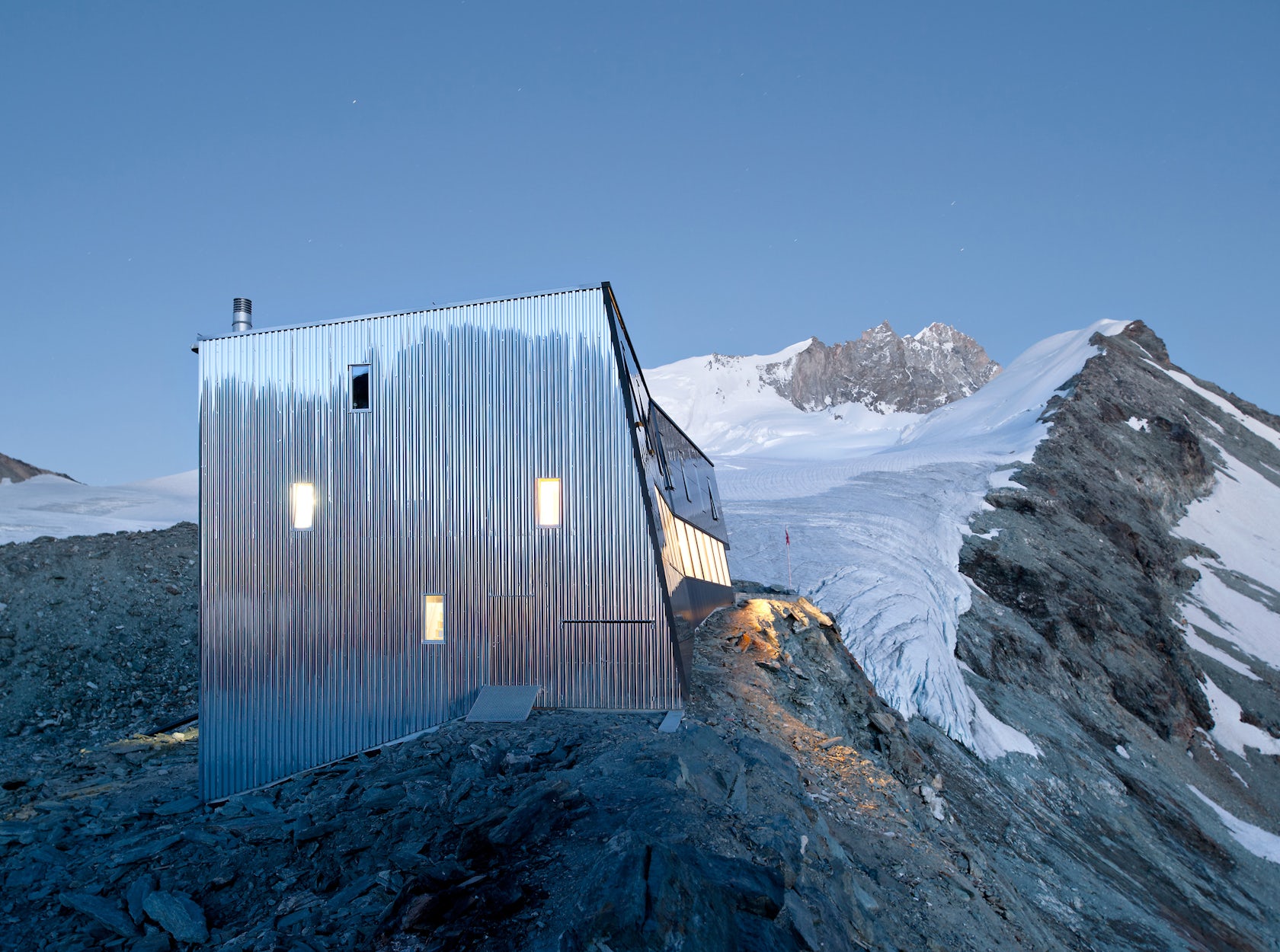The following collection features projects that hover thousands of feet above sea level, extruding from mountain peaks, glaciers, cliffs and other extreme terrain. As popular destinations for refuge among avid climbers and adventurers, these cabins and huts provide protection from the elements in geographically unique circumstances. In regions faced with rapid winds, harsh winters, earthquakes and even landslides, these architectural forms hardly shy away — instead, they apply creativity and novelty to create strong architecture exploding with suspense.
Given their territory, each project was built in critical dialog with the surrounding environment. With the transportation of buildings materials and visitor access high on the mind, each and every detail of the design processes and construction phases were critical to successful execution. Furthermore, situated atop precarious terrain, each building takes caution to minimize disturbance on the natural landscape. Through the use of cantilevers and structures elevated on stilts, the following projects exhibit built form that is just as dramatic as the environments by which they are hosted.

© OFIS architects

© Janez Martincic

© Ales Gregoric

© Ales Gregoric
Winter Cabin on Mount Kanin by OFIS architects, Kanin
Only accessible by climbing or helicopter, OFIS architects developed this compact wooden shell, which rests on extreme mountaintop terrain. Despite its precarious overhang, the cantilevered structure ensures stability through harsh weather conditions including wind, snow and landslides. While undeniably difficult to reach, the summit is well worth any effort, as the cabin offers breathtaking panoramic views.

© Saunders Architecture

© Saunders Architecture

© Saunders Architecture
Fogo Island Artist Studio by Saunders Architecture, Newfoundland, Canada
Dramatically situated on a rocky strip of coastline, Saunders Architecture created this bold geometric structure which starkly contrasts the natural environment. The studio is oriented towards the sea and elevated high above ground, so that resident artists sense that they have unobstructed and unbound access to their surroundings.

© Snorre Stinessen Architecture

© Snorre Stinessen Architecture

© Snorre Stinessen Architecture
Manshausen Island Resort by Stinessen Arkitektur, Steigen, Nordland, Norway
Off the coast of Norway and situated between dramatic mountains and the Barents Sea, Manshausen Island Resort draws inspiration from its immediate surroundings. The structures are placed on stone quays and natural shelves of rock formation, and are partially cantilevered above the sea. The positioning and orientation of each cabin considers the individual panoramic views and privacy of guests.

© Anže Čokl

© OFIS architects, Rieder Smart Elements

© AnŠ¾e Äokl
Alpine Shelter Skuta by OFIS architects and Rieder Smart Elements, Slovenia
At the Harvard Graduate School of Design, students were challenged with designing innovative yet practical shelters that meet the needs of extreme alpine climates. The task was to create a safely anchored building while producing minimal impact on the ground. Within the context of extreme risk to environmental forces, OFIS architects and collaborating students created this thrilling refuge inspired by Slovenian architectural heritage.

© Pesamosca Giovanni Architetto

© Pesamosca Giovanni Architetto

© Pesamosca Giovanni Architetto
Bivacco Luca Vuerich by Pesamosca Giovanni Architetto, Sella Nevea, Italy
Located at the crest of Foronon Buinz Mountain in the Julian Alps is this prefab modular wood structure, which was named in memory of deceased climber Luka Vuerich. The project contains nine beds and is situated 2531 meters above sea level. Since its inauguration, the building has become a a safe and protected destination for mountain lovers throughout all seasons.

© Saunders Architecture

© Saunders Architecture

© Saunders Architecture
Squish Studio by Saunders Architecture, Newfoundland, Canada
The poignant trapezium plan of this studio dramatically emerges from rocky terrain on the eastern end of Fogo Island. Both the interior and exterior of the studio are clad in white-painted spruce planks, creating crisp and unwavering color contrast from the surrounding landscape.

© savioz fabrizzi architectes

© savioz fabrizzi architectes

© savioz fabrizzi architectes

© savioz fabrizzi architectes
New Mountain Hut at Tracuit by savioz fabrizzi architectes, Zermatt, Switzerland
Located between a cliff and a glacier, this new hut designed by savioz fabrizze architectes was constructed along the ridge of a cliff. At this altitude, the construction methods were adapted to the adverse weather conditions and the means of transport available. As such, the whole structure is framed in wood while the use of heavy concrete was intensely minimized.



